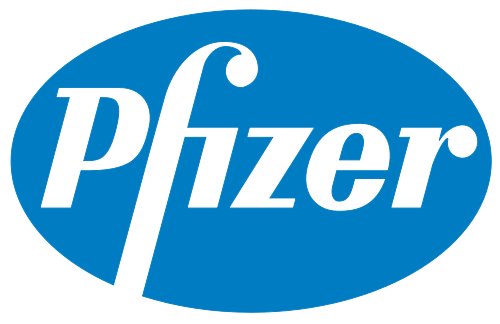Health and Healthcare
The Bullish and Bearish Case for Pfizer in 2015
Published:
Last Updated:
Last year was another great one for a bull market that is nearly six years old. The Dow Jones Industrial Average (DJIA) rose 7.5% and the S&P 500 Index rose 11.4% in 2014, at least without considering individual stock dividends. Pfizer Inc. (NYSE: PFE) managed to close out 2014 at $31.15, for a gain of 5.3%, if you include its dividend adjustment.
24/7 Wall St. has undertaken a bullish and bearish case to evaluate both sides of the coin and see what lies ahead for Pfizer in 2015. One key consideration for the year ahead is that the Big Pharma giant is not alone in its efforts to restructure. The Pfizer of 2016 or 2017 is likely to be night and day different from the Pfizer of 2005. Also, it is nearly impossible to do long-term valuation analysis on Pfizer without constant comparisons to Merck & Co. Inc. (NYSE: MRK).
The stock has a 2014 trading range of $27.51 to $33.12, and the consensus analyst price target of $34.45 would imply upside of 10.6% this year. Then there is the dividend yield of 3.5% to consider. Pfizer has a market cap near $205 billion, and the ongoing patent cliff continues to plague Pfizer and other drug giants. The Celebrex is the most recent drug under generic threat.
ALSO READ: The Bullish and Bearish Case for Procter & Gamble in 2015
Jefferies recently indicated that Pfizer could be a large acquirer of a company, particularly now that its tax-inversion strategy has backfired. As we have seen with many other DJIA leaders, Pfizer is among the top corporate spenders on research and development, which historically makes for solid long-term investing strategies.
Another solid development for Pfizer shareholders is that the most recent stock buyback plan was just too big to ignore. We called it a buyback on Viagra. Another issue to consider is that Pfizer was named among the defensive stocks that initially held up better than the market in the September market correction.
Pfizer may have not performed as well as Merck in 2014, but it does have a higher dividend yield of about 3.45%, versus almost 2.9% for its rival. Also, we have run the same bullish and bearish analysis for Merck in 2015 and beyond.
Another consideration in Pfizer’s bullish and bearish outlook is not just the consensus analyst price target of $34.45. The stock rose more than $1 in the first week of 2015 from the $31.15 close at the end of 2014. Pfizer’s lowest analyst price target is $29, and that implies a floor that is above the 52-week lows in valuation. The street-high analyst price target is all the way up at $41, which means the most bullish case from analysts implies upside of more than 30%, even without considering the dividend. It would be closer to 35% with the dividend.
ALSO READ: The Bullish and Bearish Case for Johnson & Johnson in 2015
Unfortunately, Pfizer’s revenue estimates now show a period of continued decline. That may be due in part to divesting efforts, but finding serious growth prospects inside Pfizer has not been as easy as it used to be.
Revenue was $61 billion in 2011 and down to about $51.6 billion in 2013. Thomson Reuters has estimates for revenues to be $49.25 billion in 2014 and $48.3 billion in 2015. Pfizer trades at a slight discount to the broader market at 14 times expected 2015 earnings, versus over 17 times expected 2015 earnings for rival Merck.
After a dividend-adjusted performance of 5.3% in 2014, Pfizer’s total return this year, with the dividend included, is expected to be 14.1%. When we ran the bullish and bearish case for Dow stocks in early 2014, the consensus analyst target at the time called for a gain of about 7.8% (versus 2.3% expected for Merck at that time).
ALSO READ: The Bullish and Bearish Case for Merck in 2015
Investors should probably just assume that Pfizer will keep buying back stock and looking for bolt-on acquisitions in a simultaneous manner. CEO Ian Read said in Pfizer’s earnings release in October:
We remain strategically focused on driving increased innovation and enhancing our global competitive position both in terms of operational and financial efficiencies and remain opportunistic regarding business development that can enhance or accelerate our strategy. Given our continued strong financial position, I see Pfizer as well positioned to potentially allocate capital for the benefit of shareholders across multiple financial and strategic opportunities. … We continue to expect to repurchase approximately $5 billion of our shares this year, with $4.2 billion repurchased through October 27.”
Investors who are bullish on Pfizer are looking at a potential value stock, a high dividend and a serious restructuring, potentially mixed with an acquisition and a major stock buyback. The bearish investors are scratching their heads and trying to figure out what great things are actually happening in the core-Pfizer right now. Which side is right remains up for debate.
After two decades of reviewing financial products I haven’t seen anything like this. Credit card companies are at war, handing out free rewards and benefits to win the best customers.
A good cash back card can be worth thousands of dollars a year in free money, not to mention other perks like travel, insurance, and access to fancy lounges.
Our top pick today pays up to 5% cash back, a $200 bonus on top, and $0 annual fee. Click here to apply before they stop offering rewards this generous.
Flywheel Publishing has partnered with CardRatings for our coverage of credit card products. Flywheel Publishing and CardRatings may receive a commission from card issuers.
Thank you for reading! Have some feedback for us?
Contact the 24/7 Wall St. editorial team.